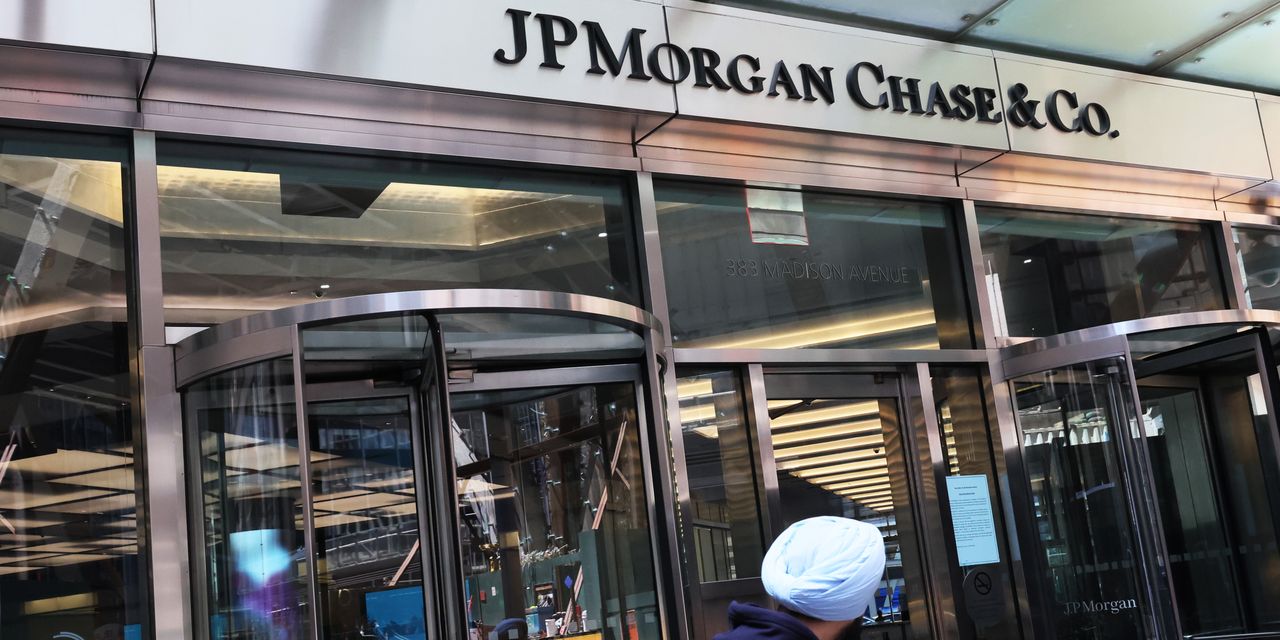JPMorgan
Chase saw a jump in profits in the second quarter thanks to higher interest rates and its acquisition of
First Republic Bank
in May.
Profits at JPMorgan (ticker: JPM) surged 67% to $14.5 billion, amounting to earnings of $4.75 a share. Excluding the impact of the First Republic acquisition, profits still increased by 40% to $4.37 a share. Analysts surveyed by FactSet forecast earnings of $3.98 per share.
With JPMorgan being both the first of the big banks to post results and the largest U.S. bank by assets, Wall Street pays close attention to its earnings as the bank is often seen as a bellwether. Banks have had to navigate a challenging macroeconomic climate over the last year. The higher interest rates that have allowed banks to charge more interest on loans last year have instead become a liability for the sector, raising their funding costs and eroding the value of their bond portfolios.
But despite these headwinds, JPMorgan still benefited from higher rates. Net interest income increased by 44% to to $21.9 billion. That increase led to a 34% jump in revenue to $41.3 billion.
Despite the turmoil that embroiled the banking industry last year, JPMorgan has emerged unscathed. Shares have risen 11% this year while the
SPDR S&P Bank ETF
(KBE) has shed 15%. In May, JPMorgan stepped up to take over failing First Republic Bank, allowing the bank to acquire $173 billion in loans and $62 billion in deposits after returning $30 billion in deposits made by JPMorgan and other large banks in March to prop the bank up. Friday is the first time the bank has posted earnings since the acquisition.
Other banks have had a more challenging time during the troubles this spring. JPMorgan,
Bank of America
(BAC) and other large banks were net beneficiaries as deposits fled to the perceived safety of the big banks. Smaller banks, meanwhile had to worry about deposit flight and had to be prepared to pay more interest on deposits to avoid the type of exodus that crippled Silicon Valley Bank and First Republic.
As such, at JPMorgan and other banks, investors will be paying close attention to net interest margin—or the spread banks earn between the interest they take in on loans and the interest they pay depositors. NIMs had been widening when banks were able to charge more on loans but they face increasing pressure to pay more interest, causing NIMs to plateau or tick lower.
Despite these industry headwinds, JPMorgan easily topped estimates. Investors will be paying close attention to the bank’s assessment of the economy. Recession worries have been an overhang on markets this year as investors have assessed the impact of the Federal Reserve’s rate-hikes to tamp down on inflation.
“The U.S. economy continues to be resilient. Consumer balance sheets remain healthy, and consumers are spending, albeit a little more slowly. Labor markets have softened somewhat, but job growth remains strong. That being said, there are still salient risks in the immediate view,” said Jamie Dimon, chief executive at JPMorgan, in a statement Friday.
JPMorgan showed that net charge-offs doubled year over year to $1.4 billion and that it has added $1.5 billion to reserves for soured loans. Excluding in the impact of the First Republic acquisition, the net reserve build was $326 million. In an interview with the Economist released this week, Dimon said it was “possible” that the U.S. could enter into a recession in the next six months though he was unsure about whether it would be mild or severe.
Citigroup
(C) and
Wells Fargo
also report earnings on Friday. Bank of America (BAC),
Goldman Sachs
(GS) and
Morgan Stanley
(MS) post their second-quarter results next week.
Write to Carleton English at [email protected]
Read the full article here













